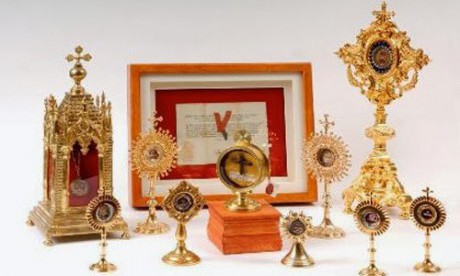The University of Oxford is to become a world leading centre into the study of religious relics following the launch of a new department.
This ground-breaking centre, based in Keble College’s Advanced Studies Centre, is to be composed of computer and medical scientists as well as historians, classicists and theologians.
Such an interdisciplinary approach builds upon work that has been undertaken by the university’s archaeological school since the 1980s.
Past achievements within the university have included the dating of the shroud of Turin, which involved study in three laboratories and the radiocarbon accelerator unit.
This new unit is the first time that such a wide-ranging field of experts has been brought together in this way.
The use of relics in Christian worship is ancient but for some it represents the worst excesses of superstition.
Here are some of the more unusual, quirky and controversial relics.
The head of St Catherine of Siena – San Domenico Basilica Siena, Italy
St Catherine of Siena lived a pious life after experiencing a vision of Jesus at the age of seven.
Her parents had arranged her marriage to a local man. In order to resist this attempt and preserve her virginity, she cut off her hair and scalded her head with hot water.
She died in Rome in 1380 and the people of Siena asked for her body to be returned home but were refused. Some of her devotees secretly dug up her body and severed her head, placing it in a bag.
There is a legend that when the roman guard apprehended those who had taken the head, all that was found in the bag were rose petals.
When they finally arrived in Siena the rose petals had miraculously turned back into St Catherine’s head.
Today St Catherine’s head can be seen alongside her thumb and attracts large number of pilgrims each year. Her body remains in Rome and her foot is claimed to be in a reliquary in Venice. Continue reading
Sources
- Catholic Herald, from an article by Fr Matthew Pittam, a priest of the Archdiocese of Birmingham.
- Image: Catholic Saints Blogspot
